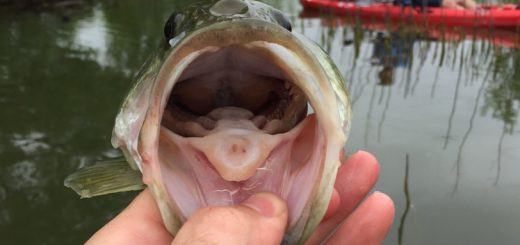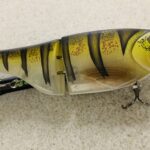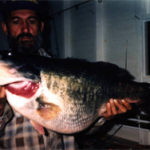20 Largemouth Bass Facts You Don’t Already Know
Here is a list of 20 fun-facts about Largemouth bass that may surprise you.
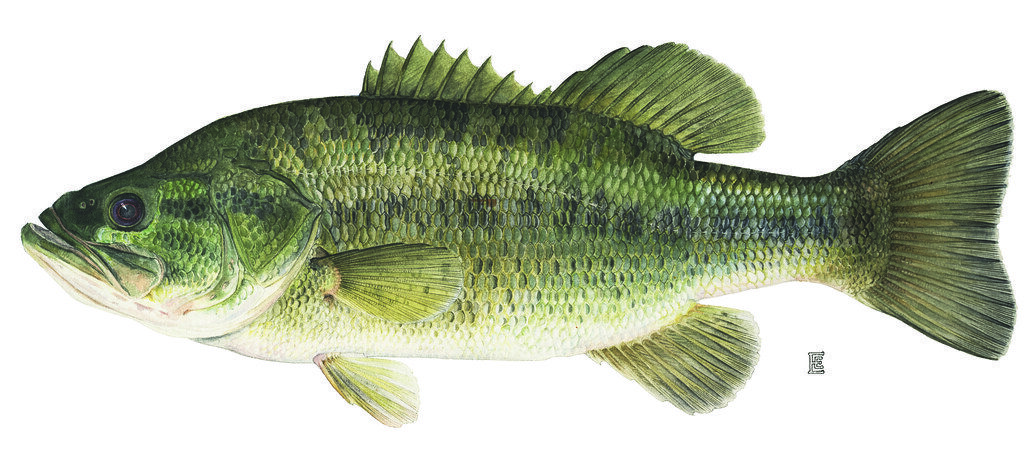
“Largemouth Bass” by NYS Department of Environmental Conservation
1. Taxonomists recognize two subspecies of largemouth bass: the Florida largemouth and the Northern largemouth. The two look alike but the Florida largemouth has slightly smaller scales and grows faster.
2. The largemouth bass is one of the most widely distributed fish in the WORLD and can currently be found in North America, South America, Europe, Asia, Africa and even the Pacific Islands.
3. Largemouth bass are just one of the 30,000+ species of fish that have been identified.
4. Largemouth bass can see well in all directions except straight back and straight down.
5. Largemouth are a part of the sunfish family – Centrarchidae – which means “nest builders”.
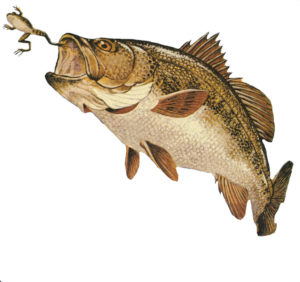
“Largemouth Bass” by NOAA Great Lakes Environmental Research Laboratory
6. Sound travels 4.3x faster underwater than through air. Bass use their lateral lines to “hear” or detect sounds and vibrations from up to 100 feet away. Bass can only see for about 50 feet (in optimal conditions).
7. The heaviest largemouth bass ever officially weighed-in, was caught by Manabu Kurita in Japan. It weighed 22.311 pounds and was hooked using a live bluegill.
8. Research has shown that some largemouth bass occupy isolated areas and only make localized movements while other bass make lengthier journeys that can cover many portions of the lake in as little as one day.
9. Just how fast can a bass swim? They can swim in bursts of more than 3 body lengths per second. That means a 20 inch bass could travel close to 5 feet in just 1 second.
10. Female largemouth bass can produce 4,000 eggs or more. The female bass will drop the eggs in stages, mating with multiple males, to ensure the best survival rate for her offspring.
11. In the summertime, largemouth bass are often attracted to the cooler waters of a lake’s thermocline. The thermocline is where stratification occurs between the lakes warm surface water and the cool water from the lake bottom. Even though the thermocline may have half of the oxygen level as the warmer surface – bass seek its cooler temperatures anyway.
12. Largemouth bass have firm muscular bodies built primarily for strength rather than speed. Bass are not tailored for long pursuits and rely on quick turns, not sustained forward speed to catch prey.

Close up of largemouth eye
13. Largemouth bass have excellent vision and see most of the same colors as humans. Selecting a lure natural in color and resembling the prey they are feeding on will help fool them into biting.
14. Bernard Germain de Lacépède (1756-1825), a French naturalist, was the first to describe the largemouth bass in 1802.
The original nomenclature chosen was Labrus salmoides. Lacépède’s translated description is as follows:
Nine goaded rays and thirteen spokes articulated at the fin of the back, thirteen rays at the fin of the anus; the operculum composed of four blades, and terminated by an angular prolongation; two orifices to each nostril; the general color of a blackish brown.
15. The vision of largemouth bass improves with age. Their eyes continue to grow throughout their life, regardless of body growth.
16. The name “bass” is derived from the Old English word bærs, meaning prickly fish – referring to spiny dorsal fins that all perch (including largemouth) have.
17. Bass don’t grow new scales as they get bigger, but their scales do increase in size as they grow – creating growth rings.
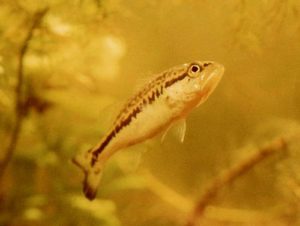
“Largemouth Bass (1975)” by Hunter-Desportes
18. An average 2 lb female bass will lay about 8000 eggs a year. From those eggs only 5-10 will survive to be 10 inches or longer.
19. Largemouth bass have 6 senses. In addition to hearing, sight, smell, taste and touch they also have the lateral line. This later line is a set of pores that run down the fishes sides and can detect movement and pressure changes in the surrounding water.
20. George Perry’s 22.25 pound bass from Montgomery Lake in 1932 still holds the IGFA World Record and has not been “officially” beaten over 87 years later.

